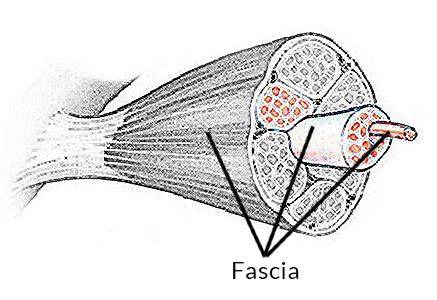No Matter the Headache…It’s Muscles

Chapter 3, introduced how you accommodate to the affects of stress and are unaware of its contribution to ongoing headaches. As explained in previous chapters, when a stressor occurs the Sympathetic Nervous System (SNS) gears you up for action and unless you know how to return your body to the calming activity of the Parasympathetic Nervous System (PSNS), you can get stuck in a hyper alert state causing wear and tear on your body. Continuing to follow this chain of events, the next link to explore is muscle physiology and why muscles are central in causing the headache pain of both migraine and tension headaches, making them chronic.
There are 3 types of muscles and they behave very differently. Cardiac muscle is made to work continuously, pumping blood throughout your body and is not under voluntary control (except for very adept yogis!). Smooth muscles are located in blood vessels and viscera and under the control of the Autonomic NS. The muscles of the head, neck, jaw and shoulders are skeletal muscles attached to bones enabling movement. These are controlled by the Voluntary NS and are but are also influenced by the stress response.
Unlike Cardiac or Smooth muscles, skeletal muscles of the head, face, jaw and neck generate headaches because they are anatomically designed to work and then relax.
If they work too long they become fatigued, tense, tight and painful. If you’ve ever experienced overdoing an exercise you notice feeling fatigue at the time and muscle soreness later.
Though muscles of the head, neck, jaw and shoulders are under voluntary control, there are a number of unconscious reflexes that kick in with the activation of the alarm response. If the alarm response continues, so do the reflexes. These involuntary, automatic responses are called bracing behaviors. Imagine when you last tripped or fell, what happened? You most likely thrust your arms out to break your fall, this can injure your wrist and arm. Unless you have been trained to respond differently, this is an automatic and immediate response. You have no control over it because it happens so quickly. The same occurs with your jaw muscles. Clenching your teeth together quickly can happen when startled, threatened physically or when you are emotionally upset.
So, if these bracing behaviors persist because of ongoing stress the muscles keep working long past the time when they need to relax and repair. And, now these muscles are compromised.
Try testing this by holding a heavy book in the air with your arm straight out in front of your body. After awhile, your shoulder and arm will become tired and you’ll want to put the book down. Now you can see why the muscles of your head feel painful, they are in a constant working state because of tension.
And, as we discussed in the proprioception chapter, you can become used to a certain amount of tension and not really be aware of what behavior created it.
EMG Biofeedback monitoring demonstrates the tension is chronic when the muscles can’t relax back to normal easily. Depending on how long a person has had headaches and how chronic and severe they are, it can take a month or more to gradually re-train these chronically tightened muscles back to normal ending the chronic cycle of ongoing headaches.
By now you may be saying to yourself, that is kind of weird! “Why can’t I just relax my tense muscles as soon as I realize they are tense?” This is a great question and there is a very good explanation of this phenomenon. It is called the MyoFascial Pain Syndrome.
We mentioned earlier that all the muscles that move the skeleton need to relax after working or they become fatigued. And, we know that when a muscle works it contracts and when it relaxes it elongates back to its normal resting state. So, a chronically tight muscle’s ‘normal’ state is contracted and shortened. This is where the fascia becomes part of the compromised muscle problem.
Fascia is connective tissue that holds the muscle fibers together and connects it to the bones. And the fascia is tough, fibrous and dynamic because it will gradually change its shape to conform to the shortened muscle.
And here is the secret to chronic muscle pain and headaches. If the muscle does not relax back to its normal length regularly the fascia will shrink around the shortened muscle fibers keeping them abnormally tight and painful.
And it is this shortened fascia that prevents muscles from relaxing, effectively locking in tension and chronic fatigue which makes you even more vulnerable to headaches.
Over time without an intervention, the muscle becomes shorter and shorter, more and more irritated because the fascia locks in this tightness.
In advanced stages, this myofascial tightening leads to Trigger Points (painful nodules within the muscle). Health professionals recognize this phenomenon as the result of overly tense and compromised muscles but unfortunately, it is rare that the connection between tight muscles and headaches is made. When this is recognized early in the process our behavioral intervention with Biofeedback is a superior and effective way to interrupt this muscle shortening and fascial tightening before it ever reaches the Trigger Point stage and beyond.
At this point, you may be saying to yourself something like “This is well and good for Muscle Tension Headaches but what about Migraine Headaches?” And the answer is that this same muscle tightening, shortening and fascial shortening phenomenon also occurs in Migraine Headaches.
If you have migraines more often than once a month, it is an indication muscles are involved and tension headaches work like a detonator to an explosion aka triggering your migraine.
This is why migraine headaches progress from once a month, to 5 times a month, to daily over time. Muscles have shortened, the headache causing phenomena is locked in and medication and other more invasive modalities can do little to change this.
Using muscle monitoring Biofeedback is why it is effective for both tension headaches and migraines. The vascular aspect to migraine headaches is made far easier to deal with once the chronic tension component has been eliminated.
In the next chapter of the Story of Stress and chronic headaches we will talk more about the interaction of tight muscles and the vascular phenomena of vasoconstriction and vasodilation in migraine headaches.
